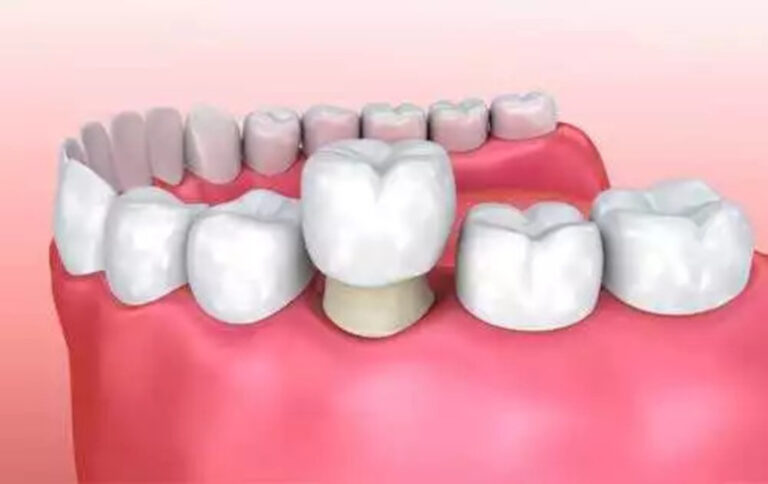Does Tooth Decay Always Need a Filling?
If you’ve ever been told you have a cavity, your first thought was probably, “Do I need a filling?” Most of the time, the answer is yes—but not always. Tooth decay is more like a spectrum than a single event. And not all stages of decay require a drill-and-fill approach.
So when does tooth decay actually need a filling? And are there cases where it can be reversed or managed without one?
Let’s take a closer look at the truth behind tooth decay and when intervention is truly necessary.
Understanding the Stages of Tooth Decay
To understand whether a filling is needed, it helps to know what’s happening inside your tooth. Decay typically progresses through several stages:
- Demineralization (White Spot Lesions): In this earliest phase, acids from plaque begin to dissolve the minerals in your enamel. You might notice a chalky white spot, but the surface of the tooth is still intact.
- Enamel Decay: Once minerals are lost and not replaced, the enamel begins to break down. This is when decay officially becomes irreversible without dental treatment.
- Dentin Involvement: If decay isn’t treated, it advances into the dentin—the softer layer beneath the enamel. At this point, the cavity can grow quickly and usually causes sensitivity.
- Pulp Involvement or Infection: If decay reaches the pulp (the nerve of the tooth), you’re likely to feel pain, and a root canal may be needed.
Now let’s match treatment to stage.
When a Filling Might Not Be Necessary
If your decay is still in the demineralization stage—before a hole has formed in the enamel—it may be possible to stop or even reverse the process. How?
- Fluoride treatments: When decay is still in its earliest stage, fluoride can play a critical role in reversing the damage before it progresses. Professional fluoride treatments—such as varnishes applied at your dentist’s office—deliver a concentrated dose of fluoride directly to the weakened enamel, helping to remineralize and strengthen it. Prescription-strength fluoride toothpaste, used daily at home, can also enhance your enamel’s resistance to acid attacks. These treatments not only halt the progression of early decay but can sometimes reverse it entirely if used consistently and in combination with good oral hygiene.
- Remineralizing pastes or rinses: These products are specially formulated to help replenish the essential minerals—calcium and phosphate—that have been lost from the tooth’s enamel during the early stages of decay. When applied consistently, they support the natural remineralization process, helping to restore enamel strength and prevent further breakdown. These pastes or rinses often contain ingredients like casein phosphopeptide-amorphous calcium phosphate (CPP-ACP) or hydroxyapatite, both of which can bind to the enamel surface and promote mineral uptake. Using them in conjunction with fluoride toothpaste enhances their effectiveness, especially when combined with good oral hygiene and reduced sugar intake.
- Improved oral hygiene: Maintaining a consistent and thorough oral hygiene routine is one of the most powerful tools in preventing early-stage tooth decay from progressing. Brushing at least twice a day with fluoride toothpaste helps remove plaque and neutralize acids that erode enamel, while fluoride strengthens the tooth surface. Flossing once a day is equally important, as it removes plaque and food debris from between teeth and along the gumline—areas that a toothbrush can’t reach. When practiced consistently, these habits create an environment where decay is far less likely to advance, allowing the enamel to remain stable or even recover if supported with additional remineralizing treatments.
- Diet changes: The bacteria responsible for tooth decay thrive on sugars and carbohydrates. Every time you consume something sugary or starchy—whether it’s candy, soda, bread, or even fruit juices—these bacteria produce acid as a byproduct. This acid gradually erodes your tooth enamel, especially if exposure is frequent. By reducing your intake of sugary snacks and drinks, and limiting how often you snack between meals, you significantly cut off the primary food source for these harmful bacteria. Replacing sugary options with healthier alternatives like vegetables, nuts, cheese, or water not only supports oral health but also helps your saliva naturally neutralize acids and remineralize your teeth.
If your dentist catches the decay early enough, they may suggest a “watch-and-wait” approach with close monitoring.
When a Filling Is the Right Call
Once a cavity breaks through the enamel, a filling is usually necessary. At this point, the damage can’t be reversed naturally. The decayed part of the tooth must be removed and replaced with a filling to restore strength and stop the decay from spreading.
Ignoring decay at this stage can lead to more extensive problems, like tooth pain, infection, or even tooth loss.
Some signs you probably need a filling include:
- Visible holes or dark spots
- Sensitivity to sweets, cold, or heat
- Food getting stuck in the same area repeatedly
- Pain when biting or chewing
Can You Delay a Filling?
Sometimes patients ask if they can “wait a bit” before getting a filling. While it’s understandable to want to delay treatment, it’s a gamble. Decay doesn’t heal on its own once it penetrates the enamel—it only gets worse. A small filling today could become a large one (or a root canal) later.
If cost or fear is a concern, talk to your dentist. There may be options to make the process more affordable or comfortable.
Final Thoughts: Not All Cavities Are Created Equal
Tooth decay doesn’t always equal a filling—but it always deserves attention. The earlier you catch it, the more choices you have—and the less invasive the treatment may be.
So if your dentist says you have the start of a cavity, don’t panic. Ask questions. Find out what stage it’s in. And remember: sometimes the best treatment is prevention, not intervention.





